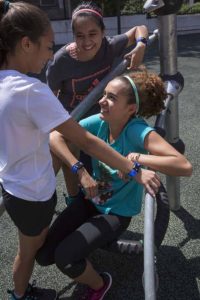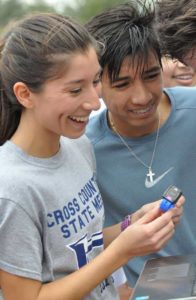Dec. 26, 2016 – Data confirming the direct correlation between active, healthy students and academic achievement continues to mount, further demonstrating the growing importance that physical education plays in schools.
“Physical activity can have both immediate and long-term benefits on academic performance,” a report published by Active Living Research found in 2015. “Almost immediately after engaging in physical activity, children are better able to concentrate on classroom tasks, which can enhance learning.”
 A 2013 report details the history of Naperville (Illinois) Central’s efforts to improve students’ academic performance by enhancing the school’s physical education philosophy.
A 2013 report details the history of Naperville (Illinois) Central’s efforts to improve students’ academic performance by enhancing the school’s physical education philosophy.
“Data consistently show that since the inception of the program, students who participated in [Learning Readiness PE] increased their literacy and math capabilities,” the 2013 report concluded.
Origins of Learning Readiness PE
Naperville teachers wanted to help students struggling in reading and math by creating a physical education class that preceded the core class.
Using heart rate monitors, teachers Paul Zientarski and Phil Lawler pushed students to exercise in their target heart rate zone, which promoted healthier brain cells.
“In a study done at the University of British Columbia, researchers found that regular aerobic exercise, the kind that gets your heart and your sweat glands pumping, appears to boost the size of the hippocampus, the brain area involved in verbal memory and learning,” wrote Heidi Godman in the Harvard Health Letter in 2014.
Zientarski’s original efforts led to the nationally-acclaimed Learning Readiness PE program. By engaging students with workouts designed to maximize heart rate, students transitioned to their core classes in a better learning state.
Assessing PE performance while tracking academic progress
 IHT supports this effort by combining a new heart rate monitor designed specifically for PE, the IHT ZONE, with an assessment platform to measure everything from PE to academic performance.
IHT supports this effort by combining a new heart rate monitor designed specifically for PE, the IHT ZONE, with an assessment platform to measure everything from PE to academic performance.
“Heart rate monitors are an important piece of equipment to ensure students are exercising adequately,” Zientarski writes in the Learning Readiness PE Frequently Asked Questions.
It’s not enough to simply wear the monitors and check heart rate. To maximize the effectiveness of a PE program, teachers should use heart rate to measure a student’s effort over the entire class period. IHT’s Spirit System takes the heart rate data from the student and provides a personalized report showing all aspects of the student’s exercise in relation to goals set by the teacher:
- Time spent in each heart rate zone (Blue, Yellow, Red)
- Overall workout time
- Calories burned during workout
The software allows teachers the versatility to measure students across many metrics, including academic benchmarks.
- Any fitness assessments
- Pre-loaded Assessments tied to national outcomes and measures
- Customizable assessments including academic subject grade or standardized test score
“I plan on entering at least one of our annual standardized tests into the system,” said Oskaloosa, Iowa PE teacher Elizabeth Luck. “Then (I can) use this data to find connections between PE and academic success.”
By assessing physical education utilizing heart rate data, IHT will continue to support the effort to improve student academic performance through enhanced physical education.


